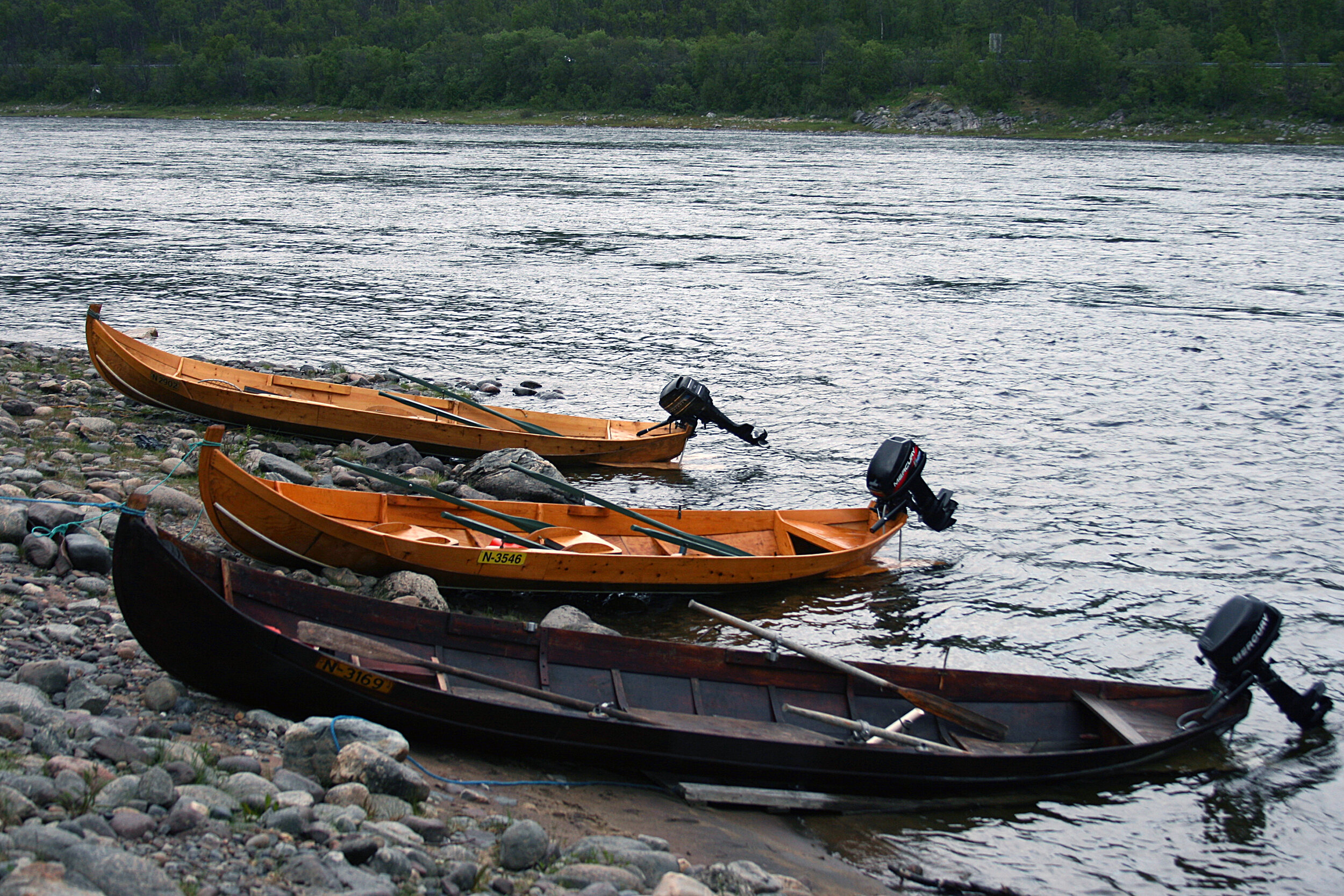Deanufanas - The river boat
By Aage Solbakk
The new riverboat - the dory boat - was developed in the 1950s. It was short, wide and fairly flat at the bottom. It was easy to maneuver in steep rapids. Photo: Mihkku Solbakk.
Fanas is a Sami word for boat. It may be 3000-4000 years old.
We know that the oldest Sea Sami boats were made of leather. They were pulled with walrus skin - morššanáhkki - and held together with seams and lashings of wild reindeer tendons. In Kárášjohka/Karasjok, some leather boats were made in the 19th century. They were sewn from cowhide - burrunáhkki.
The oldest boats in Tana were very long and narrow. They were called goargŋun-fanas (ent.) - stake boats. Their length could vary from 7 to 10 meters. They were used to transport people and goods. They were good for poling in both calm and strong currents.
Boat building was an important additional industry for people in the upper part of the valley. There were pine forests that were well suited for boat material. As a result, a unique boatbuilding tradition developed in the upper Ohcejohka/Utsjok and Kárášjohka/Karasjok.
The traditional river boat - the stake boat - was long and narrow. Photo: Deanu Musea - Tana Museum.
Floating timber from Anárjohka to the Tana estuary has a long tradition. As a result, boat building was also taken up in the lower Tana. The last boat builder here was Nils Andreas Lavde (1920-2003) from Hárrejohka/Harrelv.
People had different knowledge and talent for boatbuilding, and the boats were given characteristics according to the boatbuilder. This can be seen in names such as Láidde-fanas (Laiti boat), Eino-fanas (Eino boat) and Lávde-fanas (Lavde boat).
In the 1900s, rod fishing from boats - oaggun - became an important sideline for many in the Tana Valley. This meant that a new type of boat was needed that could be used in strong rapids with good salmon runs. The pole boat was not suitable for rowing in strong currents.
The new type of boat was called oaggunfanas in Sami. The oaggunfanas (dory boat) was both short and wide and fairly flat at the bottom. It was easy to steer in rough rapids.
Oaggunfanas was further developed after World War II, after the outboard engine became common in the river valley. It came to the valley in the 1920s. "Wings" - soaját - were made and attached to the bottom of the back of the boat - liehkku. The wings prevented the boat from pitching or tilting when using an outboard motor.
Kárášjohka/Karasjok has a long tradition of boat building. Outboard motor and stake boat photographed by Wilse in 1933. Photo: Wilse / Norwegian Folk Museum.
The developer of the new boat was Hans Halonen from Njuorggán/Nuorgam.
Henry Pottinger
In 1857, Englishman Henry Pottinger and his friend visited the Tana River. With hired rowers from Kárášjohka/Karasjok, Pottinger and his fishing buddy traveled down the river in several stages to fish for salmon. After they had finished fishing, they would pass Geavŋŋis/Storfossen, which they feared.
Pottinger and his friend were very impressed by the Sami's handling of the boats when they were going down "Storfos" - Storfossen (Pottinger, 1905).




